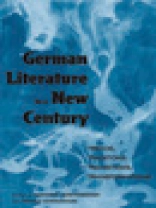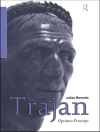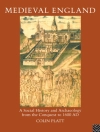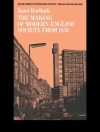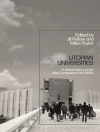While the first decade after the fall of the Berlin wall was marked by the challenges of unification and the often difficult process of reconciling East and West German experiences, many Germans expected that the “new century” would achieve “normalization.” The essays in this volume take a closer look at Germany’s new normalcy and argue for a more nuanced picture that considers the ruptures as well as the continuities. Germany’s new generation of writers is more diverse than ever before, and their texts often not only speak of a Germany that is multicultural but also take a more playful attitude toward notions of identity. Written with an eye toward similar and dissimilar developments and traditions on both sides of the Atlantic, this volume balances overviews of significant trends in present-day cultural life with illustrative analyses of individual writers and texts.
Table des matières
Acknowledgements
Introduction: German Literature in a New Century: Trends, Traditions, Transitions, Transformations
Katharina Gerstenberger and Patricia Herminghouse
PART I: TRENDS: LITERATURE IN THE PUBLIC SPHERE
Patricia Herminghouse
Chapter 1. The Literary Public Sphere: A Case for German Particularity?
Sean Mc Intyre
Chapter 2. Intellectuals in the Public Sphere: An Interview
Josef Joffe
Chapter 3. Literatur findet… nicht nur auf Papier statt”: The Eventization of Literature in Hamburg
Donovan Anderson
Chapter 4. The Deutsches Literaturinstitut Leipzig and the Making of an Author: Tobias Hülswitt Hits the Road for Literature and Ends Up a Writer
Rachel J. Halverson
PART II: TRADITIONS: HISTORY, MEMORY, AND NARRATIVE
Laurel Cohen-Pfister
Chapter 5. Degrees of History in Contemporary German Narratives
Patricia Anne Simpson
Chapter 6. Luftkrieg Revisited: Contemporary Responses to the Allied Bombings of German Cities
Sydney Norton
Chapter 7. An Aesthetics of Memory for Third-Generation Germans: Tanja Dückers’s Himmelskörper
Laurel Cohen-Pfister
Chapter 8. The Continuation of Countermemory: Emine Sevgi Özdamar’s Seltsame Sterne starren zur Erde
John Pizer
PART III:TRANSITIONS: FORM AND PERFORMANCE AFTER 1989
Katharina Gerstenberger
Chapter 9. A Path of Poetic Potentials: Coordinates of German Lyric Identity in the Poetry of Zafer Şenocak
Erika M. Nelson
Chapter 10. Performing GDR in Poetry?: The Literary Significance of “East German” Poetry in Unified Germany
Birgit Dahlke
Chapter 11. Feridun Zaimoglu’s Performance of Gender and Authorship
Gary Schmidt
PART IV: TRANSFORMATIONS: WOMEN WRITING IN THE NEW CENTURY
Patricia Herminghouse
Chapter 12. From Frauenliteratur to Frauenliteraturbetrieb: Marketing Literature to German Women in the Twenty-first Century
Julia Karolle-Berg and Katya Skow
Chapter 13. Social Alienation and Gendered Surveillance in Julia Franck’s Works
Beret Norman
Chapter 14. Small Stories: The Novels of Martina Hefter
Katharina Gerstenberger
Chapter 15. The Young Author as Public Intellectual: The Case of Juli Zeh
Patricia Herminghouse
Notes on Contributors
Bibliography
Index
A propos de l’auteur
Patricia Herminghouse is the Karl F. and Bertha A. Fuchs Professor emerita of German Studies at the University of Rochester. She has written widely on nineteenth- and twentieth-century German literature, the social contexts of women’s writing, German identity, and German émigrés in nineteenth-century America.
